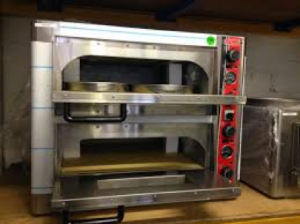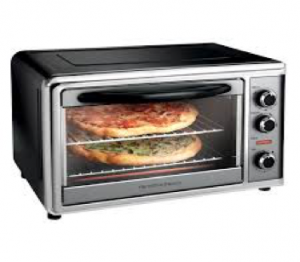SMEs are gathering strength and showing massive growth levels and (future) potential in today’s economic scenario. However, despite this being the case, in a good number of countries in the world, gaining access to and managing working capital continues to be a major obstacle that SMEs have to contend with.
“Working capital”, in the simplest terms, refers to the liquid capital (i.e., cash or funds) that SMEs can use to match the growth rate of the business. And, currently, the major hurdles SMEs have to face (and work with) are the huge gap that exists between the funds required by SMEs and the funds actually available, and efficiently managing the lean capital that they do have access to.
Challenges That SMEs Face
Why this gap between available funds and required funds exists in the first place is because the very nature of SMEs makes most banks and financial institutions hesitant to pour funds into them. (On the flip side, though, many SMEs, even when they do qualify for financial aid, also do not find the available schemes and loans suitable for their requirements.)
Here are some of the challenges that cause this scenario:
- Low Revenue, High Cost Requirements of SMEs: SMEs often follow a business model where the revenue they gain per customer is pretty low in comparison to the startup’s cost of production, distribution, and manpower. And this in turn makes credit risk a high probability, which consequently makes banks hesitant to invest in such enterprises.
- Lack of Entrepreneurial Experience: SMEs are mostly run by first-time entrepreneurs who lack experience and references in their fields. Hence, they often find it difficult not only to manage their available finances, but to also to raise more capital from investors when they need it. And sometimes, even if they do know how to manage their finds well, they still won’t have enough references or backing to convince the investors to pour more funds in the business.
- Lack of Financial Records and Books of Accounts in SMEs: Lack of financial books and credit history is another major reason why investors are hesitant to aid SMEs. As most SMEs use cash transactions and don’t maintain proper books of accounts, it becomes difficult to analyze and see a firm picture regarding the financial status and potential of the business. And this, in turn, makes SMEs a high credit risk.
- Lack of Credit History and Conventional Banking Standards: SMEs often have little to no credit history thanks to their lack of official financial records and cash transactions. Plus, SMEs concentrate more on their business model than establishment. And both these factors make it hard for banks to analyze the business’s credit reliability, which consequently makes banks and other financial institutions steer clear of such investments. Plus, in the Internet age, SMEs have even leaner establishment boundaries and logistics, which aids their business’s growth. However, conventional banking standards still don’t consider these factors and can only see a credit risk in the lack of elaborate establishment of the business. Hence, banks (again) are not willing to risk pouring funds into SMEs.
Managing Working Capital
Working capital management refers to managing the assets and liabilities that SMEs already have. And effective working capital management is more or less what stands between a startup remaining solvent or going insolvent. So here’s what should be looked out for in order to implement the effective management of working capital in SMEs:
- Educate SMEs on Effective Working Capital Management: Even if the working capital of a small business is lean, effective management of those funds can be stretched for maximum use and productivity within the business. And, since many new entrepreneurs lack experience here, they should first and foremost be educated on effective financial management practices.
- Keep an Eye on Cash Management: Careless cash management can ring the death knell for small businesses. Hence, keeping a careful eye of the management of funds and cash usage in day-to-day business transactions is vital. Maintaining regular, clear, and detailed financial records and books of accounts is a good first step to efficient working capital management.
- Adopt New Technologies: Depending on the type of business, SMEs should not be shy to adopt relevant innovations and technologies into the business. Especially include technologies that reduce costs as well as help SMEs keep track of their finances.
Getting Access To Working Capital
SMEs, in spite of the challenges they face, can still gain access to working capital, even if not as quickly or as much as they require. Here’s how:
- SMEs should maintain clear financial records. For, information asymmetry is one of the main reasons banks and financial institutions are deterred from investing in SMEs.
- The Government has already put into effect various schemes and benefits that SMEs can avail. However, most SMEs are not aware of them. Becoming aware of these schemes would give SMEs easier access to the much-needed funds they require for growth.
- Delayed payments in the course of business should be strictly supervised and reduced as much as possible.
- Choose NeoGrowth Credit Pvt. Ltd. which will help in securing working capital and empower businesses.
Governments have mostly already started working towards closing the gap between the available funds and required funds for SMEs. However, more still is left to do. On every side though – the banks, the Government, as well as the on the SMEs’ side – improvements in organization, management, and adoption of new innovations and technologies are necessary to close this gap and help SMEs gain access to the required working capital.
NeoGrowth Credit Pvt Ltd can help you get business loans. For more information refer here : https://www.neogrowth.in/applyNow/
You can also download NeoGrowth-business-loans PDF file for your reference.
Post By NeoGrowth Credit – Business Loans specially created for Retailers & Online Sellers
For more Information – email us on digital@neogrowth.in
Or Give Missed Call @ 08080861166




